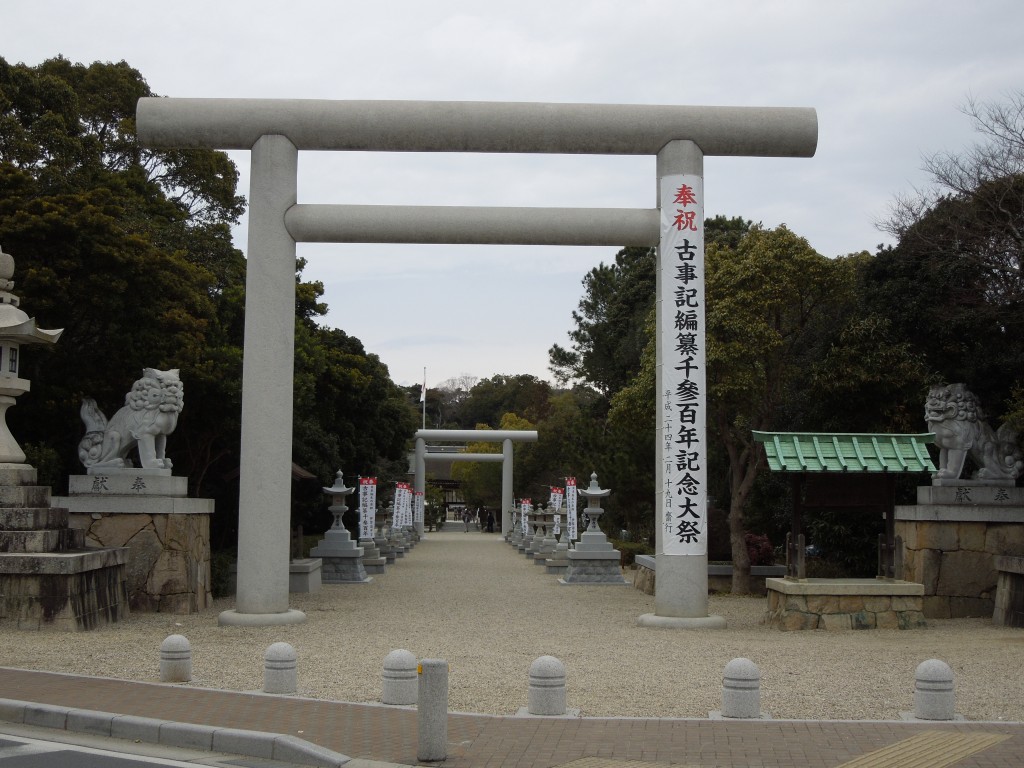
Izanagi Shrine's entrance torii, with a celebratory banner on one of the legs for the 1300th anniversary of the publication of Kojiki in which Japan's Creation Myth first appeared
Shrine approach
The Creation of Japan is closely connected with Awaji Island, and the guardian shrine for the myth is Izanagi Jingu (see Part One). The last time I visited the island was in 2002, at the time of the World Cup when England’s football team were based there. I got to see David Beckham, Michael Owen et al. at a training session. This time I was after idols of a different sort.
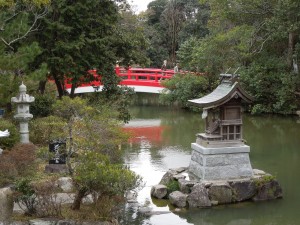
Garden aesthetics
There’s a peaceful and pleasing atmosphere to the shrine, and the spacious approach has a landscaped garden with a carp pond to one side. The stately natural surrounds are a reminder of the simple harmony of Japanese aesthetics.
On the other side of the entrance path is a striking stone monument showing the astronomical position of the shrine. It gives pause for thought, with its suggestion that the island lies at the centre of Japan…
According to my friend, Robert MacNaughton, who has made a study of Creation Myths, “the place of creation or the place where the creator is buried is always the the centre of the land in archaic ontology. It is the place where recurrent or renewed creation pours out from, according to Joseph Campbell in the Introduction to The Hero with a Thousand Faces.”
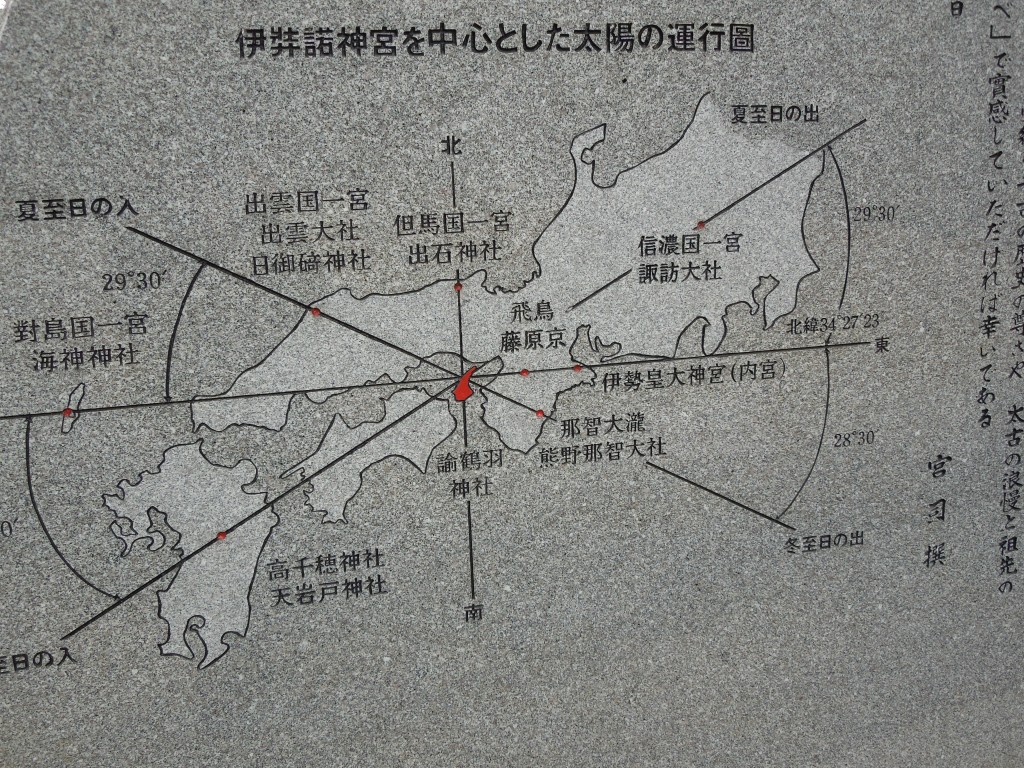
Astronomical map showing Awaji at the centre of summer and winter solstice lines
In the picture above the top lines shows the sunrise and sunset at the summer solstice, as seen from Awaji. The line to the right passes through Suwa Taisha in Nagano, and the line to the left passes through Izumo Taisha. Here, you might say, is the Japanese equivalent of ley lines, based on the movement of the sun rather than the energy of the earth.
The bottom righthand line shows the sunrise at the winter solstice as seen from Awaji. It passes through Nachi Taisha in Wakayama. The bottom left line shows the direction of the sunset, and the line passes through Takachiho with Amaterasu’s Rock Cave. In this way Awaji prides itself on being at the centre of a spiritual nexus.
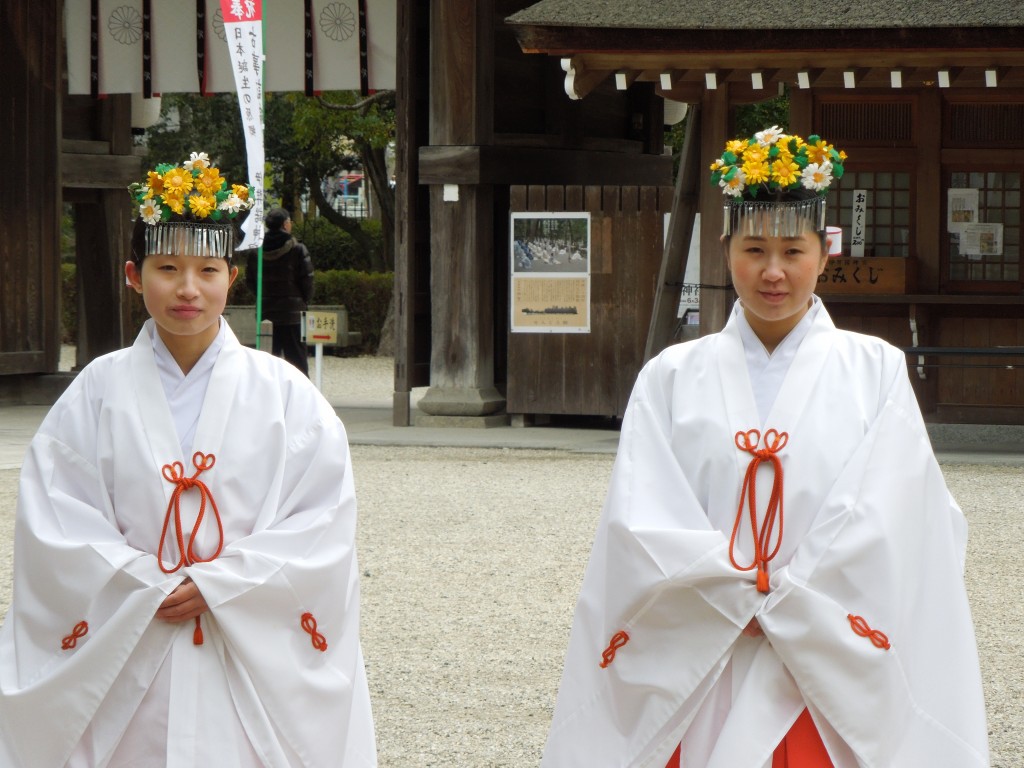
Miko on their way to perform kagura
Shrine compound
Inside the spacious shrine compound it became clear that Izanagi Jingu is a popular place for gokito (prayer requests). Miko and priests crossed back and forth over the elegant corridor connecting the haraiden (purifcation hall) and the haiden (worship hall). The sound of music filled the air, though the beat was rather different from the usual style, more like the joyful music you hear at Gion Festival.
According to the shrine literature, after ending his work of creation Izanagi no mikoto handed over authority to his daughter Amaterasu and withdrew to a palace called Kakurinomiya on the site of the present shrine. His exploits in Yomi are honoured by one of the shrine’s ema taking the shape of a peach. And the frame to tie up fortune slips has a peach shape too.
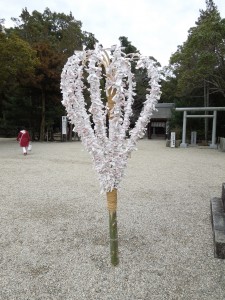
Peach-shaped omikuji stand
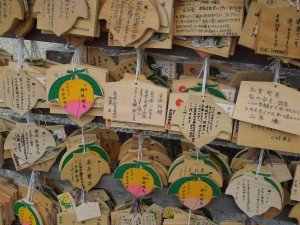
Spot the peach-shaped ema
Amongst the posters decorating the shrine walls were a couple celebrating Awaji being the origin of Japan. ‘The first island, at the beginning of time,’ said one. I noticed too pamphlets advertising a special kagura event in September when three different performance traditions will be brought together in celebration of the 1300th anniversary of the Kojiki – from Awaji, Izumo and Takachiho. Personally that’s something I don’t want to miss.
One mystery remained: if Awaji Island was the first, then what was Onogoro Island that preceded it? Izanagi and Izanami descended there to walk around the august pillar so it must have been substantial. I asked one of the priests about this, and he said that it shouldn’t be understood as a real island. It made me think of early Shinto and how ceremonies were carried out in temporary structures of perishable material that were left to return to nature. Afterwards there would be no trace. Perhaps Onogorojima was envisaged in similar manner, as a temporary base in contrast to the permanent rocks that formed the great islands.
Later however I met with a young couple who told me that there were two other theories about Onogorojima. One was that it signified the earth in general, since it was Self-Revolving. The other theory was that it must refer to a small island off Awaji itself which acted as a stepping stone while the deities went about their work of creation. According to local folklore, the tiny Nushi Island is one such candidate since it has two striking rocks, one distinctly male in shape and the other female.
************************************
In 1995 Awaji Island was at the centre of the Great Hanshin Earthquake, and Izanagi Jingu was damaged along with much else. It was a terrifying reminder that destruction goes along with creation, and that the kami can be as violent as they can be beneficent. In a land of disasters, the fragility of life is an ever present reality. For Shinto it serves to foster greater appreciation and gratitude for the blessings we enjoy. Something of that attitude underlay the remarkable resilience, stoicism and fortitude of the people of Tohoku in their ordeal of last year.
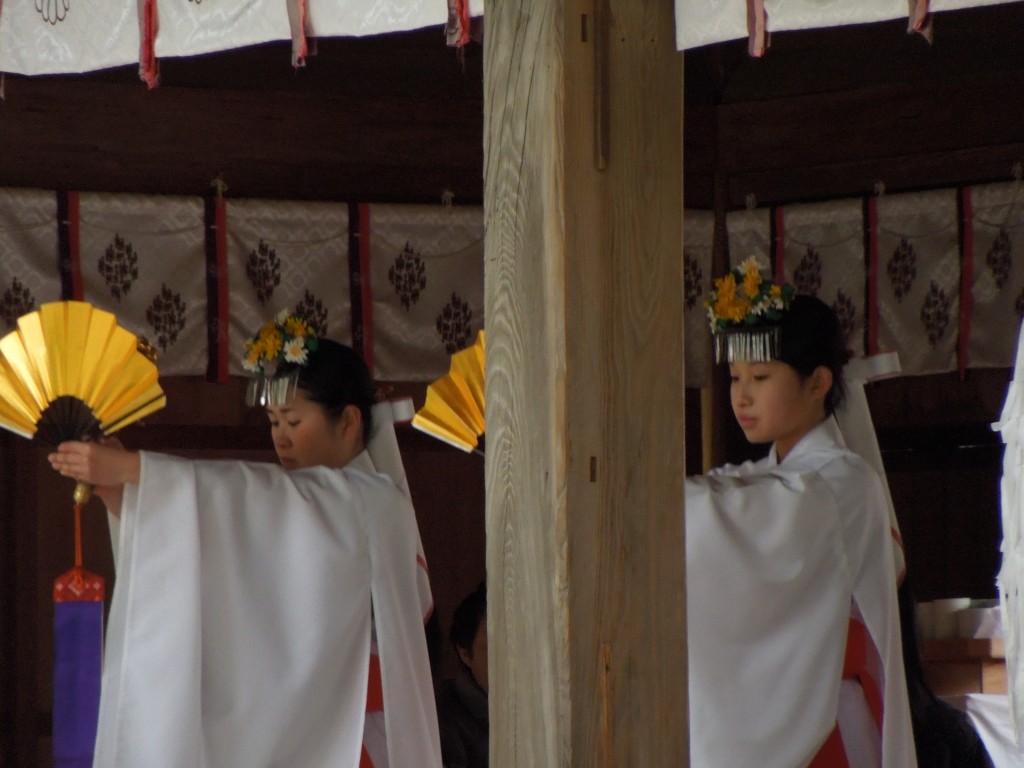
Kagura dance performance for the kami

Those ley lines also pass right through the heart of the Kibi plain, which explains why i was keen to live there.
So beautiful. Happy weekend.